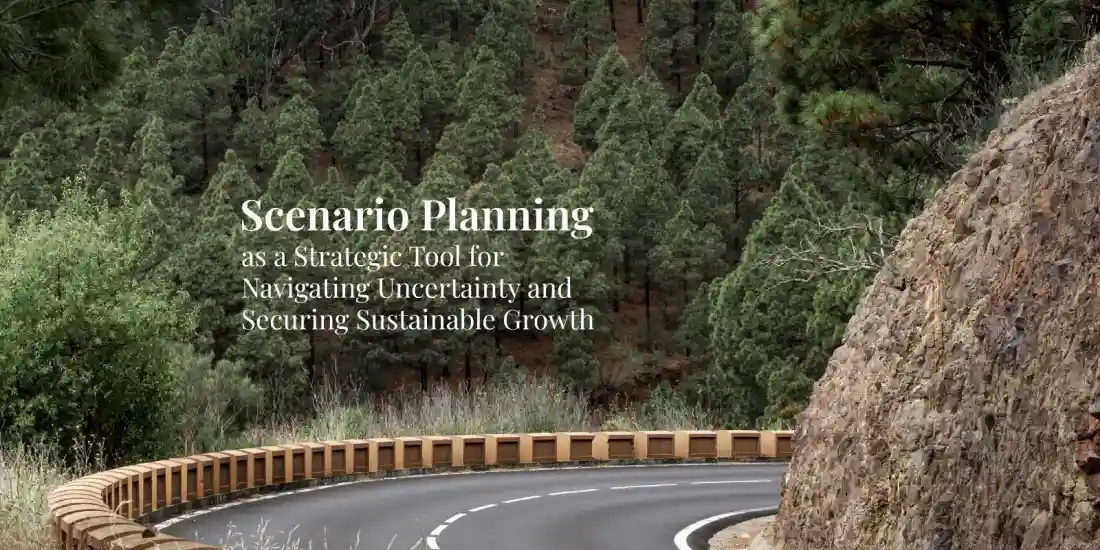We are living in an increasingly VUCA (Volatile, Uncertain, Complex, Ambiguous) world. Unforeseen events and unpredictable changes are happening faster than ever before, forcing us to review, revise, and rewrite the legacy models and methods. The recent pandemic is a classic case in point:
During the pandemic, some industries, like travel and transport, were adversely affected and their operations came to a near standstill; others, like electrical equipment faced demand-supply issues, which put pressure on their operations. With social distancing and unpredictable market conditions, the best of pre-pandemic projections and strategies went out of the window.
While the pandemic is over, increasing bilateral and multi-lateral geo-political unrest, and technological disruption, are rendering traditional forecasting and linear planning not only inadequate but in many cases, redundant. For organizations to survive and succeed in a VUCA world, a strategic tool that is agile and that considers multiple world-views of the future is critical.
Scenario planning, a strategic management technique, is an invaluable tool that entails organizations exploring multiple plausible and possible futures, to make better-informed decisions in the present. It has been used by top global companies and governments to navigate through uncertainty.
Illustrative events (key drivers of change) that underline the need for scenario planning:
1. The Pandemic and Economic Fallout:
The COVID-19 pandemic sent shockwaves through the global economy, illustrating how swiftly and severely unforeseen events can impact businesses. Companies that had scenario plans in place were better equipped to pivot in the face of adversity.
2. Geo-Political Unrest:
When the geopolitical landscape becomes increasingly volatile, with tensions between nations creating uncertainty for international businesses, scenario planning helps organizations prepare for the range of potential outcomes, mitigating risks associated with geopolitical conflicts.
3. Technological Advancements:
Rapid advances in technologies like Artificial Intelligence (AI) have the power to disrupt industries. Scenario planning enables companies to explore diverse futures shaped by technological innovations, ensuring they stay ahead of the curve.
4. Global Business Landscape Changes:
Initiatives such as the Carbon Border Adjustment Mechanism (CBAM) and Base Erosion and Profit Shifting (BEPS) are altering the global business terrain.
CBAM, in particular, is a prime example of how regulatory changes can affect industries across borders and it is relevant here as it’s mechanism has just commenced.
The CBAM, proposed by the European Union, seeks to combat climate change by imposing tariffs on imported goods based on their carbon footprint. Industries like Iron, Steel, Aluminium, Cement, Fertilizers, and Electricity in India stand to be significantly impacted.
Oct 2023: A transitional period for CBAM began on 1 October 2023 and will extend through 2025, during which time quarterly emissions reporting will be required.
Jan 2026: Indian exporters will potentially start paying carbon border tax on covered products
2026 onwards: New products will be brought under the CBAM
While the Indian government is actively taking measures to ease the matter, companies can harness the power of scenario planning to prepare for potential outcomes.
Scenario planning’s multi-stage process briefly outlined using the example of CBAM
⦁ Framing and Identifying External Parameters and Trends/ Key Drivers of Change:
In the case of CBAM, this involves considering global shifts and adoption rates, regulatory changes, technological advancements, and environmental and societal shifts.
⦁ Identifying Critical Uncertainties (Impact / Uncertainty Analysis):
Understanding variables that could significantly affect the outcome, such as which regions might adopt similar policies, how regulations may evolve, technological breakthroughs that reduce carbon footprints, and climate-related triggers.
⦁ Developing Multiple Scenarios:
Creating a range of plausible future scenarios based on critical uncertainties.
⦁ Analysing the Scenarios:
Evaluating each scenario’s potential impact on the organization.
⦁ Developing Strategies
Crafting strategies to thrive in each scenario or mitigate potential risks.
⦁ Continuous Monitoring:
Scenario planning is not a one-and-done exercise; it requires ongoing monitoring and adjustment as circumstances evolve.
Embracing Scenario Planning for Sustainable Growth
In a world marked by rapid change and unpredictability, scenario planning is no longer a luxury but a necessity for organizations that aspire to achieve sustainable growth. By adopting this strategic tool, businesses can proactively prepare for the unpredictable, seize emerging opportunities, and navigate the complex terrain of our modern age with confidence and resilience. As the saying goes, “Failing to plan is planning to fail,” and scenario planning is the key to ensuring that an organization is prepared for whatever the future may throw at it.



